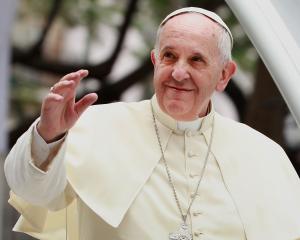The winds of change blowing through Fonterra recently have been more of a bluster than a breeze.
It has been a difficult time for New Zealand's biggest company which, in September last year, announced its first annual loss - a net loss of $196million for the July year - since its inception in 2001.
Chief executive Theo Spierings departed the same month; his $8million pay-packet causing angst among some farmer suppliers.
In July, John Monaghan took over as chairman when John Wilson stood down following a health scare. Sadly, Mr Wilson died in January this year.
Earlier this month, Miles Hurrell, who was appointed interim chief executive on Mr Spierings' departure, was permanently appointed.
A report released in November found Fonterra's financial performance since its inception had been "unsatisfactory''.
The report was in response to an increased level of commentary within the supplier base, media and the financial community in relation to its perceived performance.
Given the increased competition for milk in New Zealand, Fonterra needed to "do better'' to earn the trust of farmers, the report said.
Last week, it was encouraging to see a return to profitability when the co-operative's 2019 interim results were announced.
Net profit after tax of $80million was posted for the first half of the 2019 financial year along with the affirmation it was "well on track'' to reduce end of year debt by $800million.
But what is more refreshing is the approach that appears to be taken by those now at the helm of the world's fifth-largest dairy company.
In a world where corporate communications are increasingly littered with jargon and nonsensical posturing, Mr Hurrell and Mr Monaghan have been straight-shooters, appearing under no illusions about the task ahead.
Last week, Mr Monaghan acknowledged the review of its business strategy was not "mere tinkering around the edges'' and there would be "fundamental change''. Previously, he has spoken of the need to "breathe some fresh air'' into the business.
Mr Hurrell also spoke of a much-needed change in direction and how more was needed to lift its performance.
It is also heartening to see Mr Hurrell being accessible and actively engaging with farmers through social media - farmers, after all, are at the heart of the business.
Dairy is a big deal for New Zealand; the dairy sector employed 46,000 workers across New Zealand in 2017-18 which accounted for 3.1% of total employment.
It was estimated that, for every dollar that dairy farmers spend, an additional $1 of value-add was created across the country.
The Ministry for Primary Industries' latest Situation and Outlook for Primary Industries report showed dairy export revenue is forecast to rise 5.5% to $17.6billion for the year ending June, up from $13.3billion in 2016, $14.6billion in 2017 and $16.7billion in 2018.
Dairy farmers have had a tough time recently, including the ramifications of the Mycoplasma bovis outbreak, the ongoing environmental spotlight and a shifting attitude towards the industry.
Yet the sector has been moving quickly to address those environmental challenges - quicker, arguably than some major urban polluters that never quite make the same headlines.
So as the 2018-19 dairy season draws to a close, perhaps it is time to raise a glass of milk for another season of hard graft and ongoing improvements by the nation's dairy farmers, while also acknowledging change must continue.
And that change extends to Fonterra which is hopefully now heading in the right direction. New Zealand as a whole, not just its dairy farmers, needs it to be.












